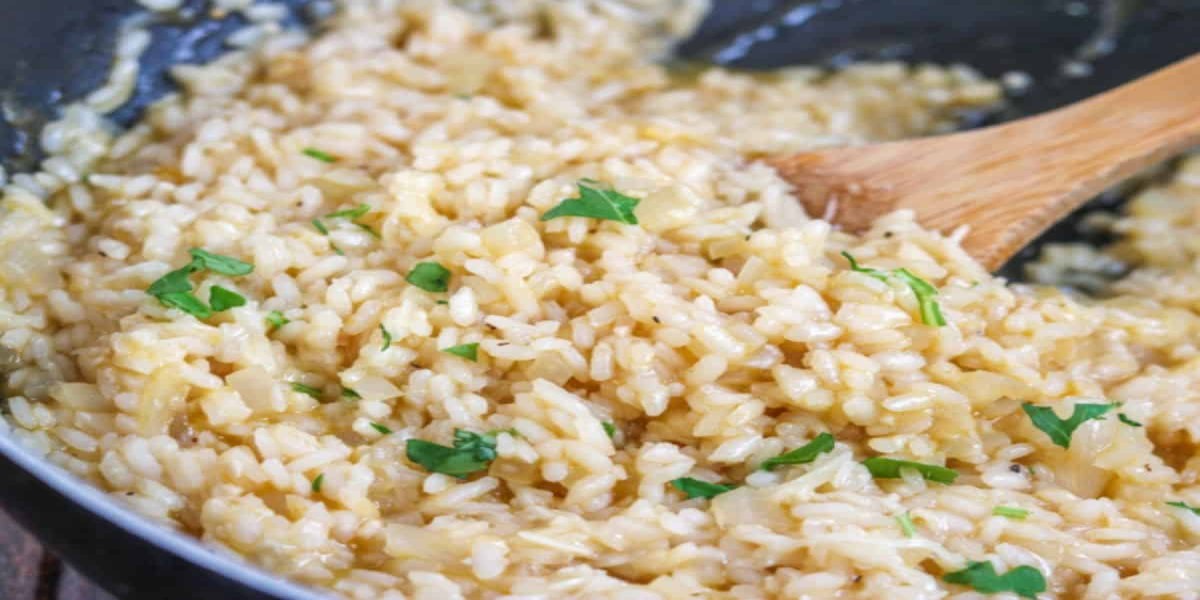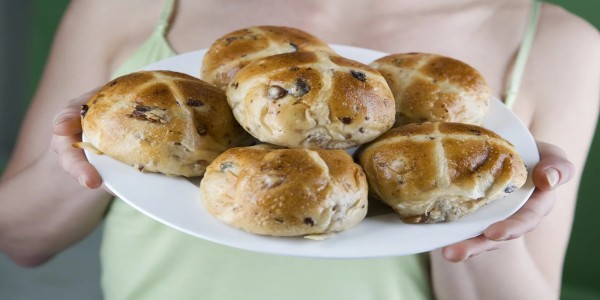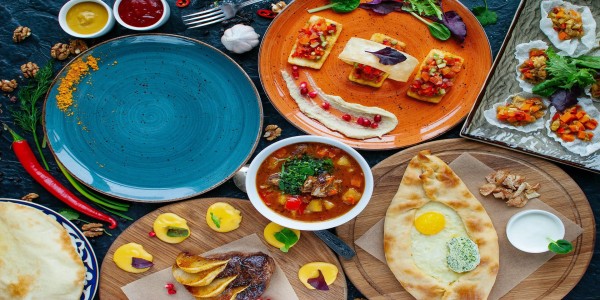Creamy Garlic Parmesan Risotto: A Culinary Delight
Embark on a culinary journey as we unravel the mysteries of creating the perfect Creamy Garlic Parmesan Risotto. This article combines expertise and personal experiences to guide you through each step, ensuring a delightful outcome that captures the essence of this savory dish.
Origins and History of Risotto in Italian Cuisine
Risotto, a beloved Italian dish renowned for its creamy texture and rich flavors, has a storied history deeply rooted in Italian culinary tradition. The dish finds its origins in Northern Italy, specifically in the regions of Lombardy and Piedmont, where rice paddies thrived in the damp, flat terrain. The word "risotto" is derived from the Italian term "riso," meaning rice.
The cultivation of rice in Italy can be traced back to the 15th century when it was introduced by Arab merchants. The moist climate and suitable land in the northern regions created the perfect conditions for rice cultivation. Initially, rice was considered a luxury ingredient, and it was often reserved for special occasions.
The first recorded recipe for risotto dates back to the late 19th century in a cookbook titled "La Cucina Lombarda" by Pellegrino Artusi. This recipe laid the foundation for the classic preparation of risotto, emphasizing the importance of Arborio rice, broth, and meticulous stirring to achieve the desired creamy consistency.
Over the years, risotto has evolved, with various regions in Italy putting their own spin on the dish. While the basic principles of using high-quality rice and a slow-cooking technique remain consistent, different regions have incorporated local ingredients to create unique and regional variations of this beloved Italian staple.
Evolution of Creamy Garlic Parmesan Risotto and its Cultural Significance
One notable evolution within the world of risotto is the emergence of the Creamy Garlic Parmesan variation. This delectable twist on the classic recipe adds a layer of richness and depth by incorporating the bold flavors of garlic and the savory goodness of Parmesan cheese.
The addition of garlic introduces a pungent and aromatic element to the dish, elevating its flavor profile. Garlic has long been celebrated in Italian cuisine for its ability to enhance the taste of various dishes, and its inclusion in creamy risotto adds a comforting warmth and complexity.
Parmesan cheese, a quintessential Italian ingredient, contributes a nutty and salty essence to the risotto. As it melts into the rice, it creates a luscious and velvety texture that complements the creamy nature of the dish. The umami-rich Parmesan not only intensifies the overall taste but also pays homage to Italy's cheese-making heritage.
The cultural significance of Creamy Garlic Parmesan Risotto lies in its ability to bridge tradition and innovation. While purists may adhere to the classic recipes, this variation reflects the dynamic nature of Italian cuisine, where chefs and home cooks alike continually experiment and adapt, creating new interpretations of timeless dishes.
In recent years, Creamy Garlic Parmesan Risotto has gained popularity on both sides of the Atlantic, becoming a favorite in Italian-American households and trendy eateries alike. Its allure lies in its comforting familiarity with a modern twist, appealing to a wide range of palates.
Elevating Culinary Delight: The Importance of Quality Ingredients in Your Dish
Introduction
In the realm of gastronomy, the art of creating a delectable dish lies not only in the hands of a skilled chef but also in the quality of ingredients chosen. Each component contributes to the symphony of flavors that dance on your taste buds, making the culinary experience memorable. Let's delve into the key components of a dish and understand the paramount role that quality ingredients play in enhancing the flavor profile.
Foundation of Flavor: Fresh Produce
The foundation of any remarkable dish begins with fresh produce. Vegetables, fruits, and herbs serve as the canvas upon which chefs paint their culinary masterpieces. Opting for locally sourced, seasonal produce ensures a burst of flavors that are not only vibrant but also reflective of the region's terroir. The ripeness of fruits and vegetables adds a natural sweetness and depth to the dish, elevating it from ordinary to extraordinary.
Incorporating organic produce takes this a step further, as it eliminates the presence of pesticides and enhances the overall purity of the ingredients. The crispness of fresh greens, the juiciness of ripe tomatoes, and the fragrance of herbs—all contribute to a sensory experience that is second to none.
The Pillars of Taste: Quality Proteins
Whether it's succulent meats, tender poultry, or flavorful seafood, the quality of proteins in a dish is paramount. Opting for responsibly sourced and well-raised proteins not only contributes to ethical dining but also enhances the flavor and texture of the final creation.
Grass-fed beef, free-range chicken, and sustainably caught fish boast a richer taste profile compared to their mass-produced counterparts. The natural diet and living conditions of these animals impart distinct flavors that discerning palates can appreciate. Quality proteins act as the pillars of taste, providing a robust foundation upon which the other ingredients can shine.
Flavor Alchemists: Herbs and Spices
Herbs and spices are the flavor alchemists that transform a dish from bland to bold. The potency and freshness of these ingredients can make or break the overall taste experience. Opting for high-quality, aromatic herbs and spices adds depth and complexity to the flavor profile, creating a harmonious blend that tantalizes the taste buds.
Freshly ground spices and herbs not only release essential oils that heighten the aroma but also contribute nuanced flavors that pre-packaged counterparts simply cannot replicate. The careful selection of herbs and spices can transport diners to different culinary landscapes, making the dish a sensory journey.
Traditional Method of Preparing Risotto
Risotto is an Italian classic known for its creamy texture and rich flavor. The traditional method involves a few key steps to achieve the perfect balance of tenderness and creaminess.
Choice of Rice
The first crucial step is selecting the right type of rice. Arborio, Carnaroli, or Vialone Nano rice varieties are commonly used due to their high starch content, which releases during cooking and contributes to the creamy consistency of risotto.
Soffritto
The base of risotto is the soffritto, a mixture of finely chopped onions, garlic, and sometimes celery or carrots. This is sautéed in butter or olive oil until softened and aromatic, providing a flavorful foundation for the dish.
Toasting the Rice
The chosen rice is then added to the soffritto and lightly toasted. This step enhances the nutty flavor of the rice and helps it absorb the liquid more effectively.
Deglazing with Wine
A splash of white wine is added to deglaze the pan, lifting any flavorful bits stuck to the bottom. This step adds a layer of complexity to the dish, as the alcohol evaporates, leaving behind a hint of acidity.
Gradual Addition of Broth
The key to risotto's creamy texture is the slow addition of warm broth. A ladleful at a time, the broth is added to the rice, and the constant stirring begins. This gradual process allows the rice to release its starches, creating a luscious, velvety sauce.
Constant Stirring
Stirring is a crucial aspect of traditional risotto preparation. It helps the rice release starch and absorb the liquid evenly. The cook's patience and attention ensure a consistently creamy result.
Finishing Touches
Once the rice reaches an al dente consistency, additional ingredients like Parmesan cheese and butter are stirred in to enrich the flavor and enhance the creaminess. Some recipes may call for a final drizzle of olive oil or a squeeze of lemon juice to brighten the dish.
Variations and Modern Techniques
While the traditional method remains timeless, modern chefs have embraced variations and innovative techniques to elevate risotto to new heights.
Ingredient Variations
Chefs are experimenting with diverse ingredients to add unique flavors and textures. Seafood, wild mushrooms, saffron, or truffle oil can be incorporated to create distinct and memorable risotto dishes.
Pressure Cooking
In the fast-paced world of modern cooking, pressure cookers have become a game-changer. They significantly reduce the cooking time of risotto while maintaining the creamy consistency. This technique is perfect for those who crave the flavors of traditional risotto but have limited time.
Oven-Baked Risotto
Another time-saving technique involves baking risotto in the oven. By combining the ingredients in an ovenproof dish and allowing them to cook without constant stirring, chefs can achieve a creamy result with less hands-on effort.
Broth Infusions
Infusing the broth with additional flavors such as herbs, spices, or even dried mushrooms before adding it to the rice can intensify the overall taste of the dish. This modern twist adds complexity without deviating too far from the traditional essence.
Grains Beyond Arborio
While Arborio rice remains the classic choice, contemporary chefs are experimenting with different grains like farro, barley, or quinoa to create risotto-inspired dishes with unique textures and nutritional profiles.
The Symphony of Garlic and Parmesan: A Culinary Ballet
In the realm of culinary artistry, few duos dance together as gracefully as garlic and Parmesan. Their partnership, a well-choreographed ballet of flavors, has graced the palates of food enthusiasts for centuries. Let's unravel the art of balancing these two culinary powerhouses and explore how their synergy elevates dishes to a gastronomic crescendo.
Garlic, with its pungent aroma and robust taste, is a kitchen virtuoso. When minced or crushed, it releases allicin, a compound responsible for its distinctive flavor. Parmesan, on the other hand, brings a nutty and savory profile, thanks to the aging process that enhances its umami characteristics. The secret lies in the harmonious marriage of these ingredients, where garlic's boldness complements Parmesan's richness, creating a symphony that tingles the taste buds.
When incorporating garlic and Parmesan into a dish, consider the form in which they are used. Roasted garlic lends a mellow sweetness, while raw garlic delivers a more assertive kick. Grated Parmesan adds a velvety texture and intensifies the umami notes. The balance is key—too much garlic can overpower, while an excess of Parmesan may mute the garlic's subtleties. Achieving the perfect equilibrium requires a delicate touch and a discerning palate.
Seasoning: The Maestro's Baton in Flavor Elevation
Imagine a dish as a musical composition, and seasoning as the maestro's baton—guiding, enhancing, and bringing out the best in every note. Seasoning is the backbone of culinary excellence, transforming a mere collection of ingredients into a harmonious masterpiece. Let's delve into the role of seasoning and its transformative effect on the overall taste.
Salt, the cornerstone of seasoning, acts as an enhancer, unlocking the innate flavors of ingredients. In the garlic-Parmesan duet, a judicious sprinkle of salt amplifies the savory undertones of Parmesan and tempers the sharpness of garlic. The marriage of these elements is elevated when salt is used with precision, allowing each note to resonate without drowning out the others.
Pepper, another seasoning virtuoso, adds a layer of complexity to the composition. Its subtle heat complements the earthiness of garlic and accentuates the nuttiness of Parmesan. Freshly ground black pepper, in particular, brings a fragrant warmth that dances on the palate, creating a sensory experience that transcends the ordinary.
Herbs, the delicate soloists in this gastronomic orchestra, contribute freshness and nuance. Basil's sweet notes harmonize with Parmesan's richness, while parsley adds a verdant brightness to the garlic's intensity. Rosemary and thyme, with their woody aromas, weave a fragrant tapestry that enriches the overall flavor profile.
Frequently Asked Questions
Can I use any rice for Creamy Garlic Parmesan Risotto?
Absolutely not. The key to a perfect risotto lies in using Arborio rice. Its high starch content creates the creamy consistency that sets this dish apart.
How do I avoid a lumpy texture in my risotto?
Patience is paramount. Stirring consistently and adding broth gradually allows the rice to release its starch slowly, resulting in a smooth, lump-free texture.
Is it necessary to roast the garlic?
While not mandatory, roasting garlic enhances its flavor, adding a subtle sweetness that complements the richness of Parmesan and the creaminess of the risotto.
Can I substitute Parmesan with other cheeses?
While Parmesan is the traditional choice, experimentation is encouraged. However, ensure the selected cheese complements the overall flavor profile.
What wine pairs best with Creamy Garlic Parmesan Risotto?
Opt for a dry white wine like Pinot Grigio or Sauvignon Blanc. Their crisp acidity enhances the dish without overpowering its delicate flavors.
How can I make Creamy Garlic Parmesan Risotto vegan?
Replace dairy with plant-based alternatives like cashew cream or nutritional yeast for a vegan-friendly version that retains the dish's essence.
Conclusion
Embark on your culinary adventure with Creamy Garlic Parmesan Risotto, armed with knowledge, tips, and a dash of creativity. Transform ordinary ingredients into an extraordinary dish that tantalizes taste buds. Elevate your cooking prowess and savor the creamy, garlicky bliss that defines this timeless classic.









